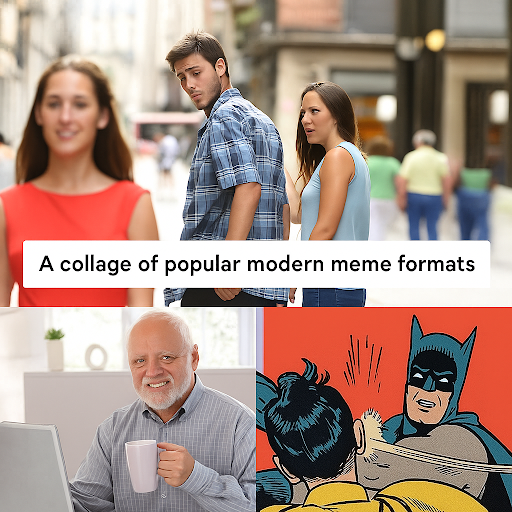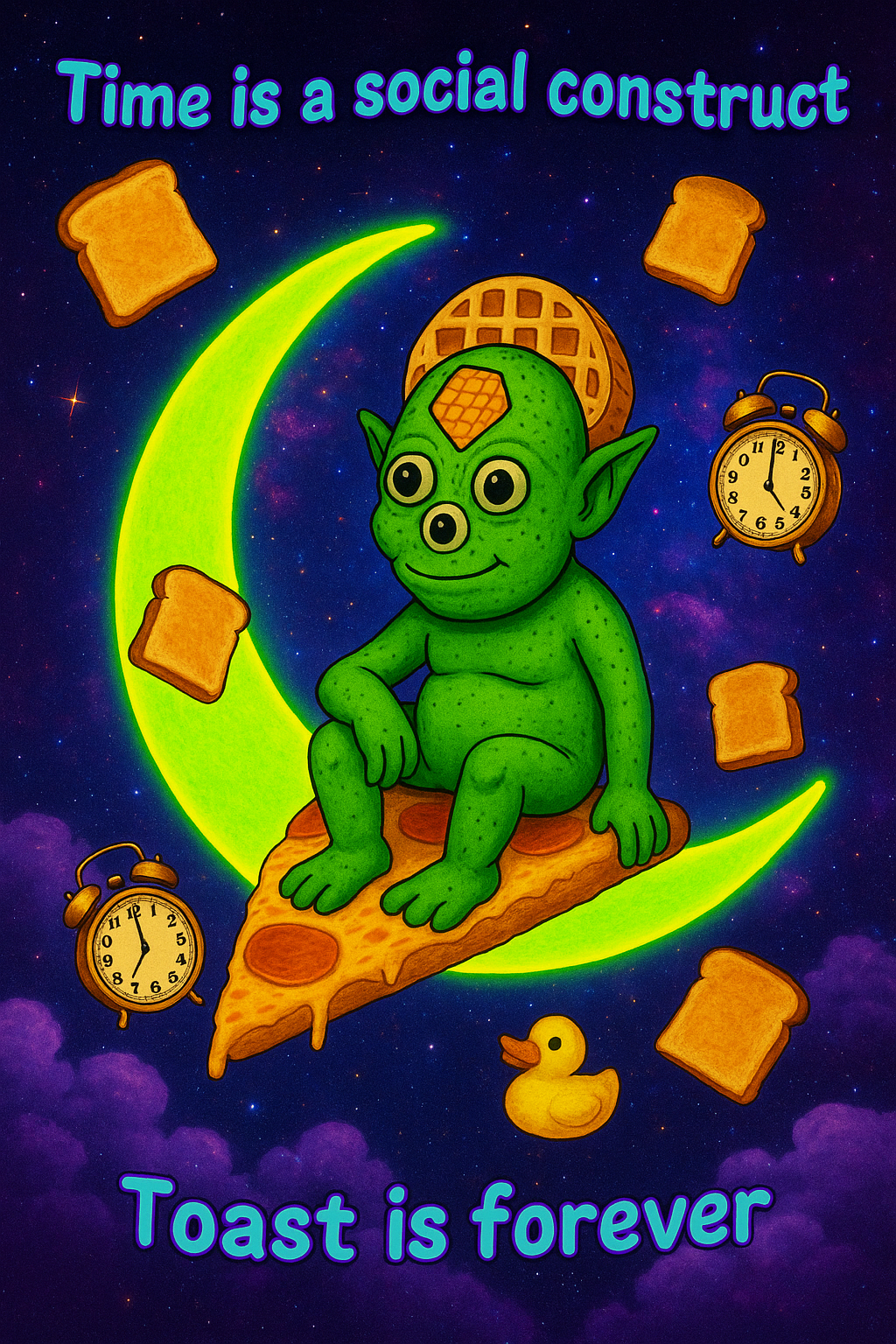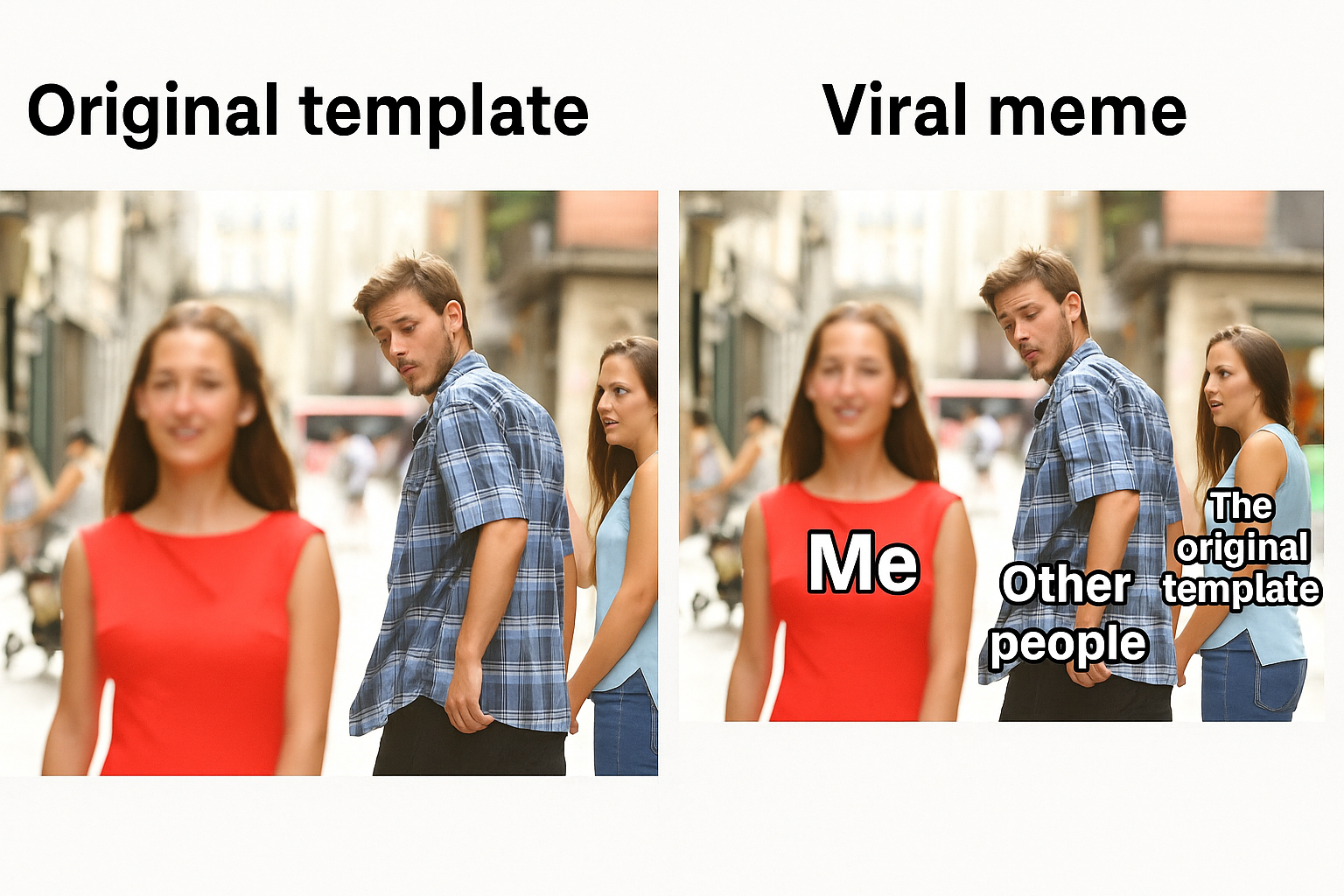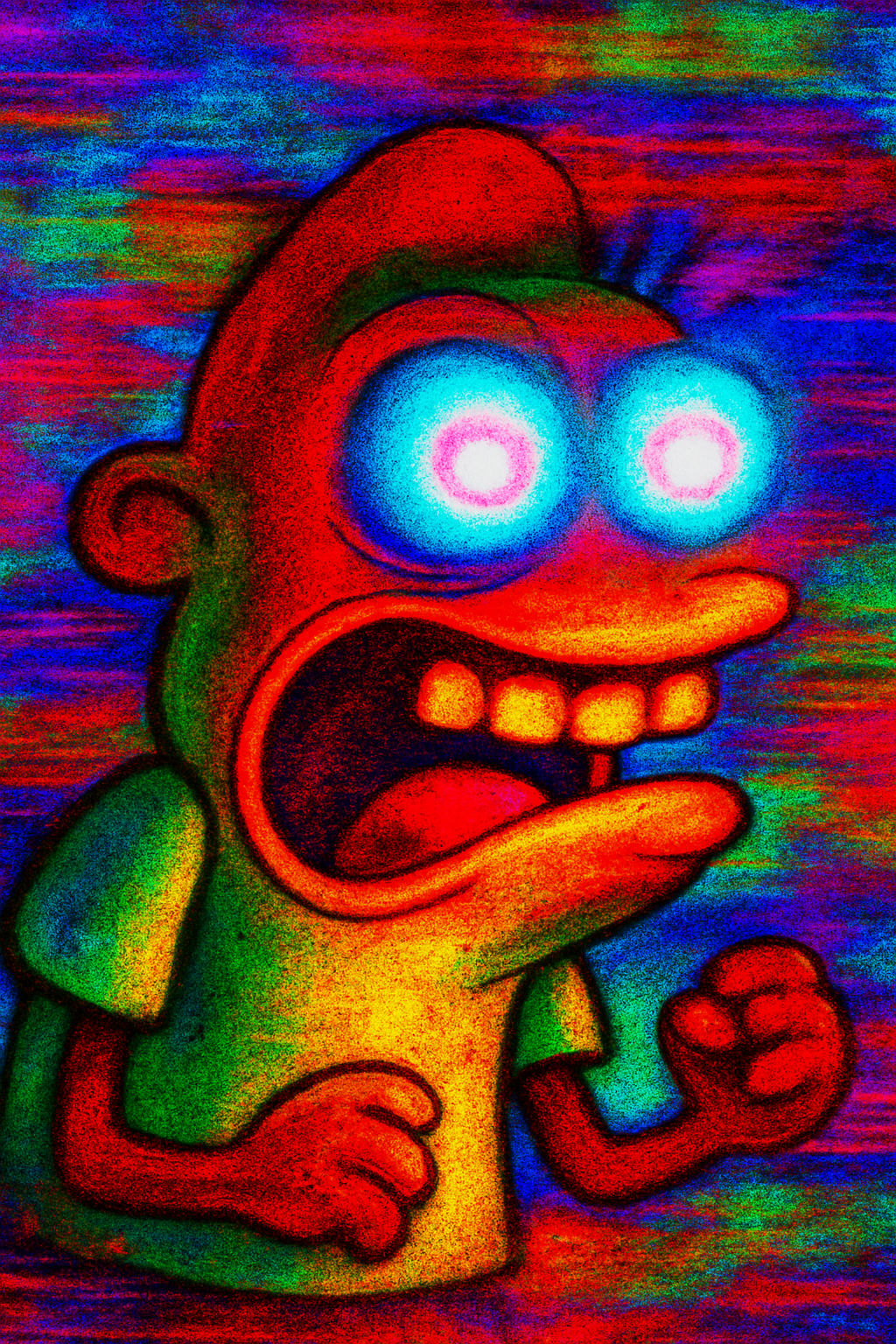Exploring Different Types of Modern Memes
In today’s digital landscape, modern memes are more than just viral jokes — they’re cultural artefacts. From chaotic humour to political satire, memes have evolved into a diverse form of digital communication. However, not all types of memes serve the same purpose. Some are made to entertain, others to educate, and some to simply confuse (looking at you, surreal memes).
In this post, we’re diving deep into the fascinating world of modern memes and the different categories you’ll come across in your daily scroll.
What Are Modern Memes?
Modern memes are typically image-based or video-based jokes, often combined with relatable text, slang, or absurd humour. Unlike traditional jokes, they rely heavily on context, shared knowledge, and meme culture. They evolve rapidly — a format that’s trending today may be old news tomorrow.

To understand the history and cultural relevance of modern memes, check out The Atlantic’s deep dive into how memes became the language of a generation.
1. Relatable Memes
Relatable memes focus on everyday experiences — school stress, social awkwardness, family struggles — and they always hit home. These are the ones that make you say, “That’s literally me.”
They’re popular because they create a sense of shared experience. Teenagers especially love relatable content as it validates their feelings in a humorous way.

Want to know why these memes work so well? Check out Why Memes Are So Funny
2. Dank Memes
“Dank” memes are intentionally absurd, edgy, and chaotic. They often involve random humour, ironic formats, and internet deep cuts. While confusing to outsiders, dank memes are a badge of honour in meme communities.
Some describe dank memes as “post-ironic” — they mock the traditional idea of memes by making them as weird as possible.
3. Political and Social Commentary Memes
Memes have become powerful tools for activism and social commentary. These types of memes use humour to highlight political issues, identity struggles, and global crises, often going viral because they mix truth with comedy.
Whether it’s climate change, mental health, or elections, modern memes can spark real conversations.

Want data-backed insight into meme influence? Read Pew Research on Teens, Social Media and Technology.
4. Surreal and Abstract Memes
Surreal memes are bizarre and often nonsensical, using odd visuals, broken grammar, and random punchlines. Their humour comes from being unpredictable and illogical — think "deep fried" memes with distorted images and strange captions.
These often go viral thanks to their “what did I just see?” effect.

5. Video and Sound-Based Memes
Thanks to TikTok, Reels, and Shorts, video memes have taken over. These rely on timing, trending sounds, and clever edits. Often, the sound becomes more famous than the meme itself.
This has led to the rise of meme songs, parody tracks, and viral dances.

To explore how audio and memes mix, check out When Memes Meet Music: The Rise of Meme Songs.
6. Reaction Memes
These are the backbone of meme culture. Whether it’s Leonardo DiCaprio laughing, the crying Jordan face, or “girl explaining meme,” reaction images and GIFS say what words can’t.
They’re quick, reusable, and endlessly adaptable, making them some of the most viral memes of all time.
7. Explainer or Infographic Memes
Some creators use formats like flowcharts or alignment charts to explain deep concepts in funny ways. These are popular in educational spaces, fandoms, and even corporate marketing.

Want to create your own meme? Try our Meme Generator to design your first infographic meme
Why So Many Meme Types Exist
Each type of meme speaks to a different audience. Some love chaos, others want deep satire. This diversity keeps modern memes fresh, exciting, and constantly evolving.
Want to understand how a meme becomes an internet obsession? Don’t miss What Makes a Meme Go Viral.
Memes Across Generations
Not all memes are appreciated equally. Gen Z memes are often fast, strange, and sarcastic. Millennial memes lean more toward nostalgia and adulting struggles. Boomers tend to share wholesome or outdated memes.
If you want to see how age affects meme taste, read Meme Generations: What Boomers, Millennials, and Gen Z Laugh At.
From Meme Formats to Memelords
Some meme formats stand the test of time (think Drakeposting or Distracted Boyfriend), while others fade quickly. Meme creators — often called "memelords" — are the driving force behind meme culture.
To find out what it takes to make your meme famous, go to Making Your Meme: What It Takes to Go Viral.
Iconic Memes That Shaped the Internet
No meme blog is complete without honouring the GOATS. Memes like Doge, Pepe, Success Kid, and Cheems aren’t just jokes — they’ve become symbols of internet identity.
Want to see the legends? Visit The Meme Hall of Fame: Icons That Changed the Internet
External Resources for Meme Enthusiasts
Final Thoughts
Modern memes have evolved far beyond inside jokes. They’re art, language, protest, and entertainment rolled into one. By understanding the different types of memes, we can better appreciate their role in shaping meme culture and how we express ourselves online.
Whether you love chaos, irony, or wholesome content, there’s a meme out there for you.
TL;DR
Modern memes are more than just jokes — they’re digital expressions of culture, emotions, and ideas. This blog explores various types of memes, from relatable and reaction memes to surreal humour and political satire. It breaks down how memes differ in tone, purpose, and audience, and why they resonate across generations. With formats like videos, infographics, and viral templates, memes have become a dynamic language of the internet.
Questions Answered by the Blog:
What are modern memes?
Image/video-based jokes that evolve rapidly and rely on shared internet culture.What are the main types of modern memes?
Relatable memes
Dank memes
Political and social commentary memes
Surreal/abstract memes
Video/sound-based memes
Reaction memes
Explainer/infographic memes
Why do different meme types exist?
Because different audiences enjoy different tones, from chaos to satire to education.How do memes differ across generations?
Gen Z prefers fast and surreal memes, Millennials enjoy nostalgic ones, and Boomers go for wholesome or outdated ones.What are some classic, iconic memes?
Doge, Pepe the Frog, Success Kid, Cheems, etc.Who creates memes and drives trends?
“Memelords” — dedicated meme creators who understand internet trends.What resources can help meme enthusiasts learn more or make memes?
Websites like Know Your Meme, meme generators like 9horsemen, and featured links in the blog.Can memes be educational or meaningful?
Yes — some memes are used to explain concepts, spark political discussion, or represent deeper ideas.
